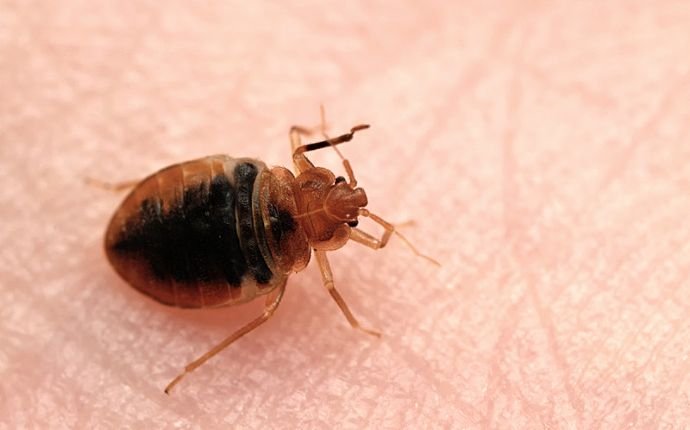To attract bed bugs, leave clutter around, have cracks in walls, and neglect regular cleaning. When it comes to dealing with bed bugs, prevention is key.
By understanding the factors that attract these pests, you can take proactive measures to keep them away from your home. In this guide, we will explore the common ways bed bugs are attracted to spaces and how you can avoid infestations.
With the right knowledge and prevention strategies, you can create an environment that is unappealing to these unwanted visitors. Let’s delve into the world of bed bug prevention and see how you can protect your home from these pesky insects.
Targeting Bed Bug Habitats
When it comes to battling bed bugs, understanding their preferred habitats is essential. Identifying common hiding spots and comprehending bed bug behavior are key to effectively eradicating these pests.
Identifying Common Hiding Spots
- Mattresses, box springs, and headboards are key locations.
- Cracks in walls and furniture joints are favorite hiding spots.
- Electrical outlets and wall sockets often harbor bed bugs.
Understanding Bed Bug Behavior
- Bed bugs are nocturnal and feed on human blood during the night.
- They are attracted to body heat and carbon dioxide that humans emit.
- Bed bugs are excellent hitchhikers, often traveling on luggage or clothing.

Credit: malumltd.co.uk
Creating Ideal Conditions
Attracting bed bugs can be unintentional through creating ideal conditions like clutter, warmth, and hiding spots. Carpets, bedding, and furniture offer perfect environments for bed bugs to thrive and multiply without detection. Regular cleaning, decluttering, and sealing cracks can deter bed bugs from infesting your home.
Optimal Temperature And Humidity Levels
Maintaining ideal room temperature between 60-80°F attracts bed bugs.Attracting Bed Bugs Through Clutter
Disorganized spaces provide ample hiding spots for bed bugs to thrive in.To attract bed bugs, ensure clutter accumulates furniture, boxes, and under the bed.Avoid tidying up often to draw bed bugs as they prefer undisturbed environments.Bedding, clothing, and other items thrown around can lure bed bugs closer to potential hosts.Using Bed Bug Lures
Attracting bed bugs using lures is an effective method to monitor and control infestations. By mimicking bed bug pheromones and other attractants, lures can be used to draw bed bugs into traps, making it easier to detect and eliminate them. Using bed bug lures is a proactive approach to managing these pests and can be a valuable tool in the fight against infestations.
Types of lures availableTypes Of Lures Available
There are various types of lures available in the market that are designed to attract bed bugs. These lures come in different forms, including pheromone traps, carbon dioxide-emitting traps, and heat-emitting traps. Each type of lure aims to exploit the bed bugs’ natural behavior and preferences to lure them into a trap for monitoring or extermination purposes.
How lures mimic bed bug pheromonesHow Lures Mimic Bed Bug Pheromones
Lures are engineered to release chemicals that replicate the pheromones and other chemical signals emitted by bed bugs. These chemical signals are used by bed bugs to communicate with each other and locate potential hosts. By replicating these signals, lures effectively deceive bed bugs into believing that a potential blood meal or a safe hiding spot is nearby, enticing them into the traps.
Employing Chemical Attractants
When it comes to dealing with a bed bug infestation, you need all the tools in your arsenal to attract and eliminate these pesky creatures. One effective method is by employing chemical attractants that lure bed bugs, making it easier to locate and eradicate them. In this section, we will take a closer look at the overview of chemical attractants, specifically focusing on the role of carbon dioxide in attracting bed bugs.
Overview Of Chemical Attractants
Chemical attractants are substances or compounds that bed bugs find irresistible, drawing them towards a specific area or trap. These attractants target the bed bug’s keen senses and signals, tempting them with a scent they simply cannot resist. By utilizing these attractants strategically, you can greatly enhance your efforts in monitoring and exterminating bed bugs.
The Role Of Carbon Dioxide In Attracting Bed Bugs
One of the most potent chemical attractants for bed bugs is carbon dioxide (CO₂), which plays a crucial role in their survival and reproduction. Bed bugs are highly sensitive to CO₂, as it serves as an indicator of a nearby blood meal. Since these pests feed on the blood of humans and animals, they have evolved a remarkable ability to detect the presence of exhaled carbon dioxide, making it an essential tool in attracting and feeding on their hosts.
When we exhale, we release carbon dioxide into the air. Bed bugs are naturally drawn towards this exhaled CO₂, allowing them to locate their human or animal hosts for blood feeding. This highly effective attractant not only helps bed bugs find their next meal, but it also aids in monitoring and trapping them. By strategically placing CO₂-emitting devices or traps, you can lure bed bugs into these areas, allowing for better detection and targeted treatment.
Moreover, carbon dioxide is often combined with other attractants, such as warmth, moisture, and specific chemical scents, to create an even more enticing trap for bed bugs. This combination mimics the conditions of a sleeping or resting host, attracting bed bugs to the designated area and increasing the effectiveness of extermination methods.
Therefore, employing chemical attractants, particularly carbon dioxide, can significantly aid in the early detection and eradication of bed bugs. By understanding the role of CO₂ and creating targeted traps, you can enhance your pest control efforts, effectively eliminating bed bugs and preventing further infestations.
Strategies For Monitoring Activity
To effectively monitor bed bug activity, implement strategies such as regular visual inspections of potential hiding spots, using interceptors to trap bugs traveling to and from furniture, and deploying active monitors that attract bed bugs with CO2 and heat. These methods allow for early detection and timely intervention to prevent infestations from worsening.
As part of your overall bed bug prevention strategy, monitoring activity is crucial. By regularly inspecting your living spaces and utilizing interceptors and traps, you can catch early signs of bed bug presence and take action immediately. Let’s explore these effective strategies for monitoring bed bug activity in more detail.Utilizing interceptors and traps One of the most effective ways to monitor bed bug activity is by utilizing interceptors and traps. These devices are designed to capture bed bugs and prevent them from reaching your beds or furniture. Interceptors are typically placed under the legs of beds or furniture, while traps can be strategically placed around your living spaces.Regular inspections for early detection Regular inspections play a crucial role in early detection of bed bugs. By conducting routine checks of your mattresses, furniture, and other potential hiding spots, you can identify signs of bed bugs before an infestation becomes severe. It’s important to carefully inspect the seams, crevices, and folds of furniture, as well as the seams and edges of mattresses.When conducting an inspection, be on the lookout for the following signs:- Live bed bugs: Use a flashlight to search for live bed bugs, which are typically reddish-brown and about the size of an apple seed.
- Dark stains or smears: Look for dark, rust-colored stains or smears on your bedding, furniture, or walls. These stains are often a result of bed bug excrement.
- Shed skins: Bed bugs shed their exoskeletons as they grow. Keep an eye out for these translucent shells in your living spaces.
- Eggs and eggshells: Bed bug eggs are tiny, pearly white, and about the size of a pinhead. Look for them in cracks and crevices where bed bugs may hide.
- Musty odor: Bed bugs release a distinct, musty odor. If you notice any unusual smells in your living spaces, it could be a sign of a bed bug infestation.

Credit: www.youtube.com
Preventing Accidental Attraction
Preventing accidental attraction is crucial in controlling the spread of bed bugs. To avoid unintentionally attracting these pests, it is essential to implement proactive measures. By following these steps, individuals can minimize the risk of unintentionally inviting bed bugs into their living spaces.
Steps To Avoid Unintentional Bed Bug Attraction
- Proper handling of second-hand items
- Regularly inspect and clean second-hand furniture and clothing to ensure they are free from bed bugs before bringing them into your home.
- Utilize heat treatments such as steam cleaning or drying on high heat to effectively eliminate any potential bed bugs.
- When in doubt, refrain from acquiring used items from unknown or unreliable sources to reduce the risk of unintentional bed bug infestations.
- Be cautious when attending garage sales, thrift stores, or receiving hand-me-downs to prevent the inadvertent introduction of bed bugs into your environment.
- Eliminate clutter and regularly vacuum and clean your living spaces to reduce potential bed bug hiding spots.
- Implementing these preventative measures can significantly decrease the likelihood of unintentional bed bug attraction, contributing to a pest-free environment.

Credit: hicare.in
Frequently Asked Questions Of How To Attract Bed Bugs?
How Do Bed Bugs Get Attracted To Homes?
Bed bugs are attracted to homes by the presence of warm bodies and carbon dioxide. They are also attracted to cluttered areas, as they provide hiding places. Additionally, bed bugs can be brought into homes through infested furniture or luggage.
Proper hygiene and regular cleaning can help prevent infestations.
What Attracts Bed Bugs To Bite?
Bed bugs are attracted to the heat and carbon dioxide emitted by humans when they sleep. They are also attracted to the scent of human skin and sweat. Additionally, bed bugs are attracted to the warmth and darkness of bedding, making it an ideal feeding ground for them.
Can Bed Bugs Be Attracted To Clean Homes?
Yes, bed bugs can be attracted to clean homes. It is a common misconception that bed bugs are only found in dirty or unsanitary conditions. Bed bugs are attracted to warmth and carbon dioxide, regardless of the cleanliness of the environment.
Regular cleaning and proper maintenance can help minimize the risk of infestations.
Conclusion
To sum it up, preventing bed bugs relies on awareness, cleanliness, and proactive measures. By understanding the factors that attract these pests, you can safeguard your home and prevent infestations. Regular inspections, maintenance, and professional assistance can help in keeping bed bugs at bay.
Stay vigilant and take the necessary steps to protect your living space.
Related posts:

I’m MD Tanvir, and I bring years of expertise gained from working closely with pest control companies to the forefront. My journey in the industry has inspired me to launch Bug Battler, a platform aimed at equipping people with the know-how to combat pests autonomously. Through Bug Battler, I aim to empower individuals with practical insights to tackle pest infestations effectively.

